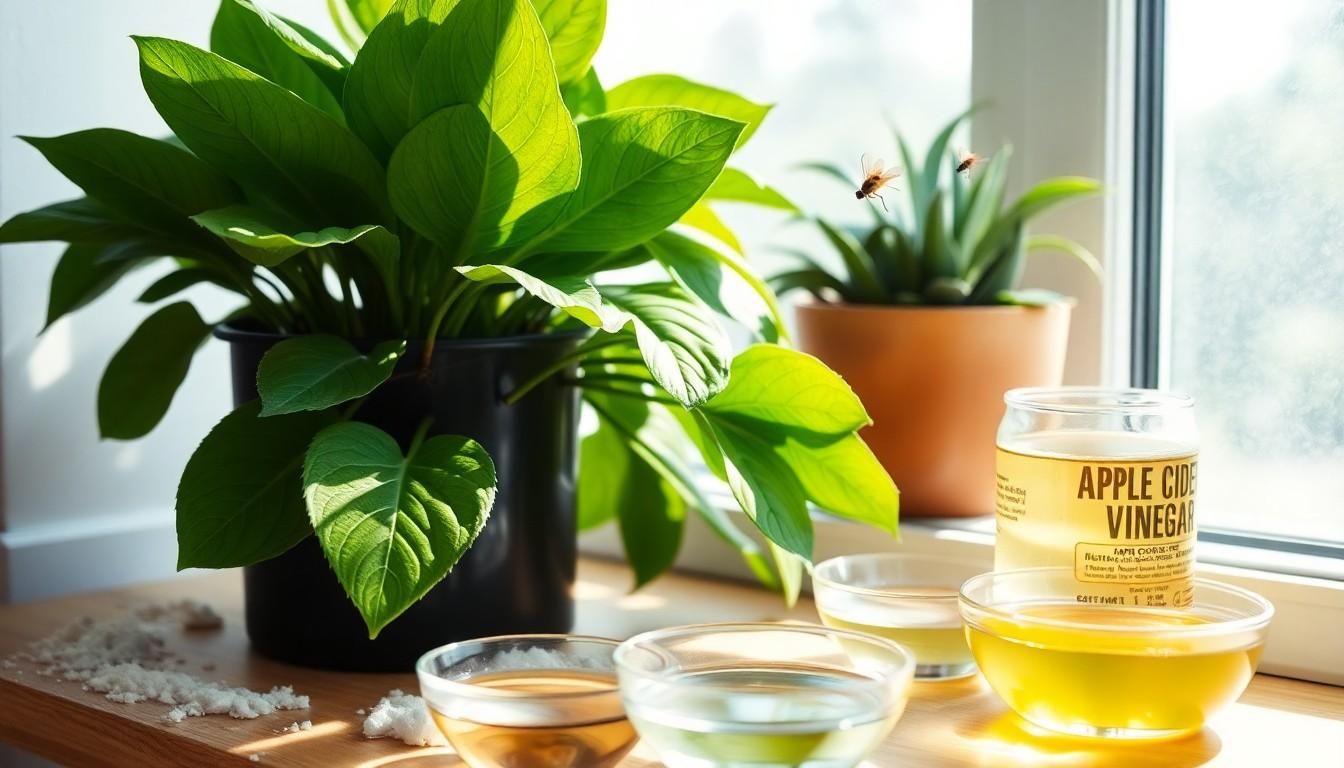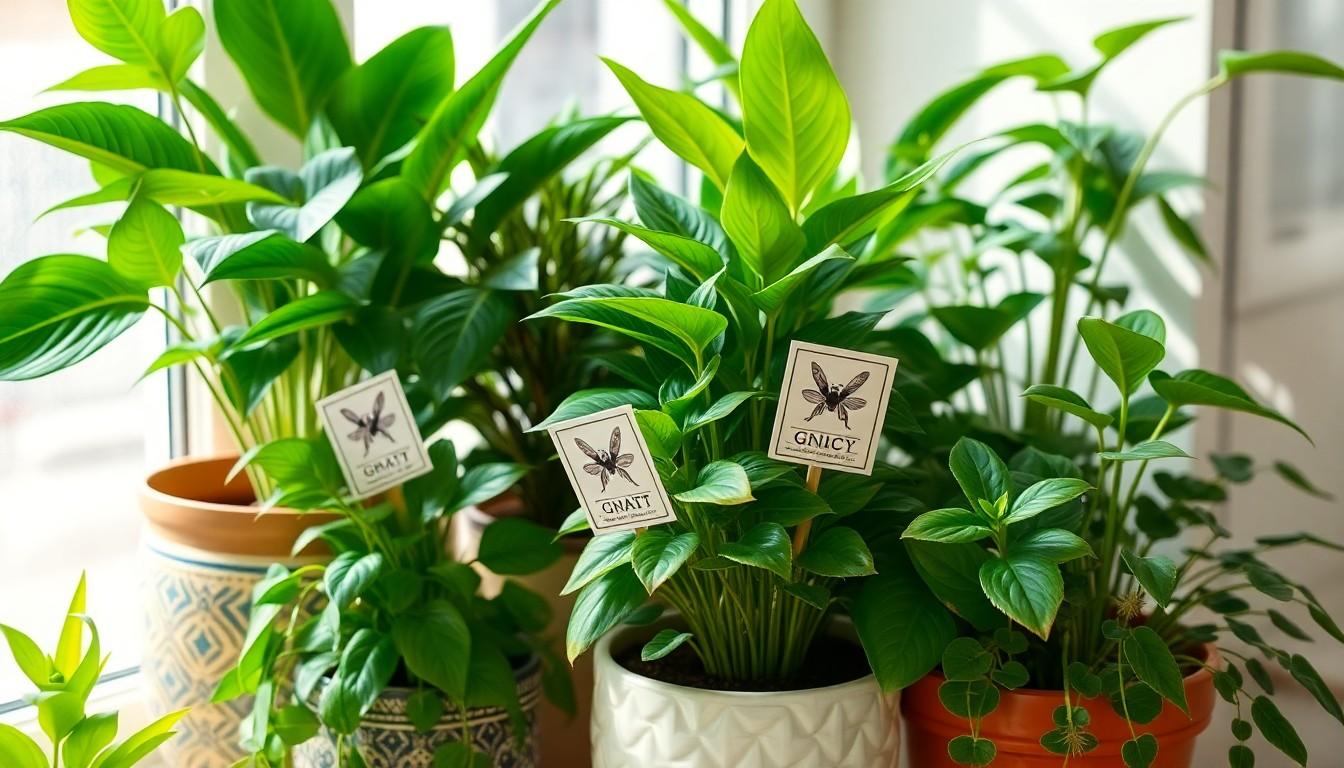Indoor plants can bring life to any space, but pesky gnats can turn that green paradise into a miniature horror show. These tiny intruders seem to thrive on chaos, buzzing around your beloved ferns and pothos like they own the place. If you’ve ever found yourself swatting at these little nuisances while trying to enjoy your morning coffee, you know it’s time to take action.
Finding the best gnat killer for indoor plants isn’t just about eliminating a nuisance; it’s about reclaiming your sanctuary. With the right solution, you can say goodbye to these uninvited guests and hello to a thriving indoor jungle. From innovative traps to natural remedies, there’s a gnat-busting hero out there ready to save the day. Let’s dive into the world of gnat control and discover how to keep those pests at bay while keeping your plants happy and healthy.
Best Gnat Killer for Indoor Plants
Gnats, often found near indoor plants, pose significant threats to plant health. These small flying pests, particularly fungus gnats, thrive in damp soil, feeding on decaying organic matter and plant roots. Their presence can lead to weakened plants, stunted growth, and increased vulnerability to diseases.
In their larval stage, gnats damage root systems, impacting water and nutrient uptake. This damage results in yellowing leaves and wilting, which can escalate if left untreated. Adult gnats, while not directly harming plants, contribute to the spread of pathogens, further compromising plant health.
A gnat infestation often indicates overwatering or poor drainage, which creates an ideal breeding environment. Identifying this issue is crucial for prevention and control. Maintaining appropriate moisture levels in the soil helps deter gnat populations and encourages a healthier indoor environment.
Effective gnat control methods range from traps to natural remedies. Sticky traps capture adults, while biological control methods, such as beneficial nematodes, target larvae in the soil. Implementing these solutions not only helps eliminate gnats but also promotes the overall health of indoor plants.
Understanding these pests and their impact aids in making informed decisions for gnat control and plant care. A proactive approach ensures thriving indoor gardens free from the disruption caused by gnats.
Types of Gnat Killers
Various gnat killers are available for indoor plants, each with unique properties. Successfully managing these pests often requires a combination of chemical solutions and natural remedies.
Chemical Solutions
Chemical solutions provide rapid results in gnat control. Many commercially available insecticides specifically target adult gnats and larvae. Products containing pyrethrins or spinosad are effective and safe for indoor use. Users should follow instructions carefully, applying chemicals in accordance with product guidelines. Applications usually occur directly on the soil or foliage, killing gnats on contact. For lingering issues, systemic insecticides, absorbed through plant roots, offer longer-term control. Always consider the potential impact on beneficial insects when opting for chemical solutions.
Natural Remedies
Natural remedies offer a safer approach to gnat management. Apple cider vinegar traps attract and trap adult gnats effectively. Setting out small bowls filled with this solution can drastically reduce adult populations. Additionally, diatomaceous earth works by dehydrating gnat larvae, proving beneficial when sprinkled on the soil’s surface. Neem oil acts as a natural pesticide, disrupting the life cycle of gnats. Regularly monitoring soil moisture helps prevent the breeding of these pests. Incorporating these remedies contributes to a balanced approach to indoor plant care and gnat control.
Criteria for Choosing the Best Gnat Killer
Selecting the right gnat killer enhances indoor plant health and ensures safe environments. Key considerations include effectiveness, safety, and ease of use.
Effectiveness
The primary function of any gnat killer is its effectiveness in eliminating gnats from indoor plants. Targeting both adult and larval stages proves crucial for comprehensive control. A potent killer rapidly reduces gnat populations and limits future infestations. Products with active ingredients such as pyrethrins or spinosad often yield effective results, quickly killing pests. Both systemic insecticides and natural solutions like diatomaceous earth can also effectively disrupt the life cycle of fungus gnats.
Safety for Plants and Pets
Safety remains a significant concern when choosing a gnat killer. The selected product must not harm indoor plants or pets. Recognized options include natural remedies like neem oil, which safely repels gnats without damaging plant tissues. Chemical solutions, while effective, require caution to minimize risks to beneficial insects. Prioritizing safety ensures that both plants and pets remain unharmed while managing pest issues.
Ease of Use
Ease of use greatly influences the selection of a gnat killer. Choosing user-friendly products simplifies the application process. Many effective options come in ready-to-use sprays or convenient traps. Ensuring clear instructions on application and reapplication enhances user experience. In addition, considering how easily a product integrates into regular plant care routines proves essential for maintaining indoor gardens.
Top Recommendations for Best Gnat Killer for Indoor Plants
Selecting the right gnat killer can significantly improve plant health and enhance indoor gardening experiences. The following products stand out for their effectiveness and safety.
Product 1: Features and Benefits
Cedar Oil Organic Insecticide is a natural option for gnat management. It eliminates both adult gnats and larvae without harming plants or pets. Derived from cedar tree extracts, this insecticide acts as a repellent, deterring future infestations. Users appreciate its pleasant scent, which masks unpleasant odors often associated with pest control. Its versatility allows application on various indoor plants, making it a reliable solution for diverse gardens. The product’s cost-effectiveness adds to its appeal, providing a long-lasting gnat management option.
Product 2: Features and Benefits
Gnatrol Biological Larvicide targets gnat larvae specifically and disrupts their life cycle effectively. Formulated with naturally occurring bacteria, this product ensures environmental safety while effectively controlling pest populations. Application is straightforward, as it integrates seamlessly into regular watering routines. Regular use promotes healthier soil ecosystems, benefiting plant root systems. Gnatrol also poses minimal risk to beneficial insects, making it suitable for organic gardening practices. Users find this product a formidable ally against persistent gnat problems.
Product 3: Features and Benefits
Sticky Traps for Indoor Plants play a crucial role in adult gnat control. Available in bright colors, these traps attract flying pests effectively, capturing them quickly. Their ease of use appeals to many gardeners; simply place near infested plants for optimal results. While traps do not address larvae issues directly, they effectively reduce adult populations. Regular monitoring ensures proactive management of gnat infestations. Safe for use around pets and plants, sticky traps provide a non-toxic, chemical-free option for maintaining plant health.
Finding the right gnat killer for indoor plants can make all the difference in maintaining a healthy and vibrant indoor garden. By understanding the life cycle of gnats and employing effective control methods, plant owners can reclaim their space and enjoy their plants without the nuisance of these pests. Whether opting for chemical solutions or natural remedies, the key is to choose products that ensure safety for both plants and pets.
Regular monitoring and proper watering practices will further enhance gnat management efforts. With the right approach and products, it’s possible to create a thriving indoor environment free from the disruption caused by gnats. Happy gardening awaits those ready to take action against these persistent pests.


